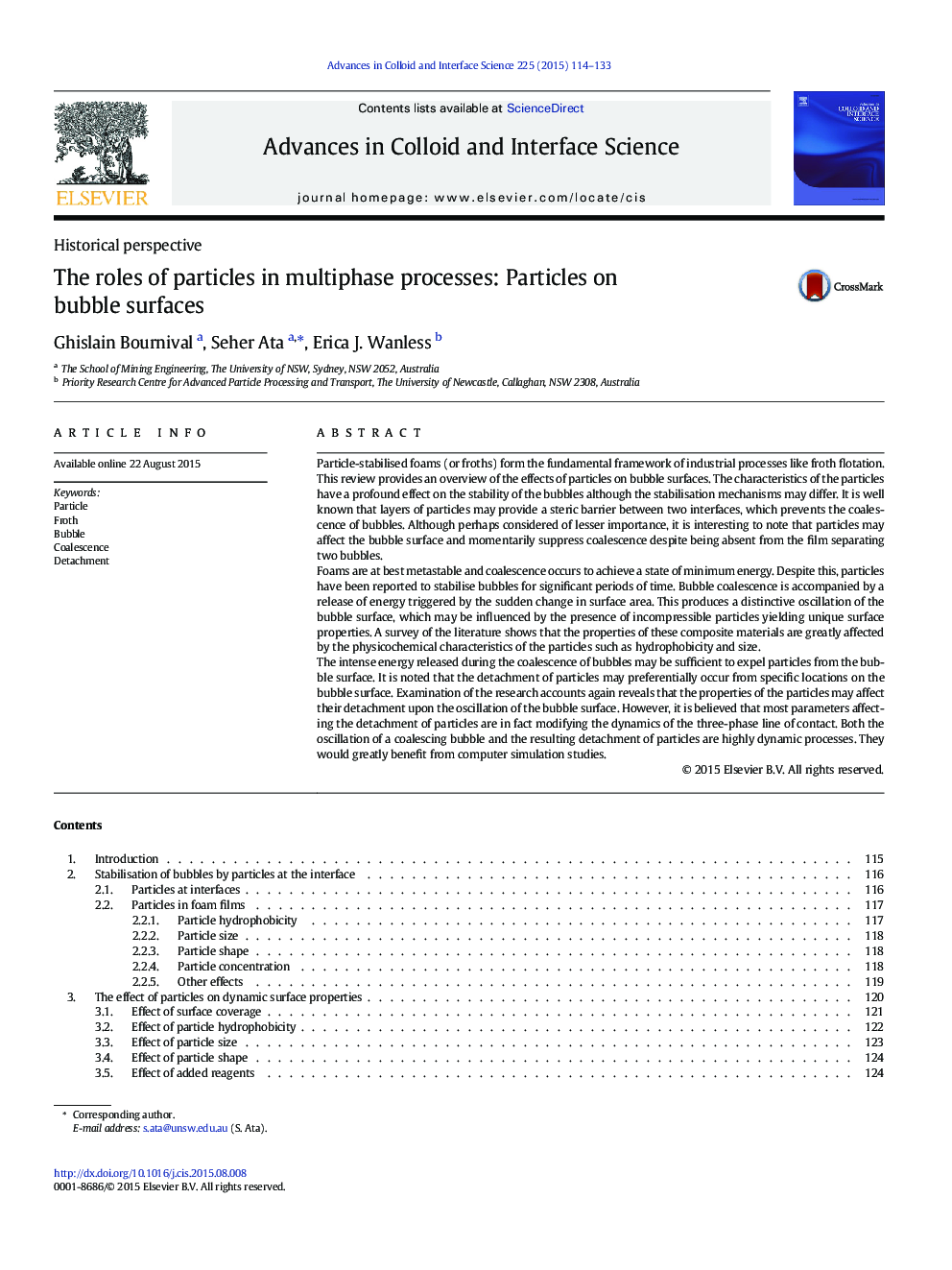| کد مقاله | کد نشریه | سال انتشار | مقاله انگلیسی | نسخه تمام متن |
|---|---|---|---|---|
| 590666 | 1453538 | 2015 | 20 صفحه PDF | دانلود رایگان |
• Review of the effect of particles on air–water interfaces
• Particles within and outside the foam film may contribute to bubble stability.
• A bubble surface bearing particles is a composite surface with elastic properties.
• Local surface properties of bubbles during coalescence are poorly characterized.
• Local surface properties are needed to understand particle detachment.
Particle-stabilised foams (or froths) form the fundamental framework of industrial processes like froth flotation. This review provides an overview of the effects of particles on bubble surfaces. The characteristics of the particles have a profound effect on the stability of the bubbles although the stabilisation mechanisms may differ. It is well known that layers of particles may provide a steric barrier between two interfaces, which prevents the coalescence of bubbles. Although perhaps considered of lesser importance, it is interesting to note that particles may affect the bubble surface and momentarily suppress coalescence despite being absent from the film separating two bubbles.Foams are at best metastable and coalescence occurs to achieve a state of minimum energy. Despite this, particles have been reported to stabilise bubbles for significant periods of time. Bubble coalescence is accompanied by a release of energy triggered by the sudden change in surface area. This produces a distinctive oscillation of the bubble surface, which may be influenced by the presence of incompressible particles yielding unique surface properties. A survey of the literature shows that the properties of these composite materials are greatly affected by the physicochemical characteristics of the particles such as hydrophobicity and size.The intense energy released during the coalescence of bubbles may be sufficient to expel particles from the bubble surface. It is noted that the detachment of particles may preferentially occur from specific locations on the bubble surface. Examination of the research accounts again reveals that the properties of the particles may affect their detachment upon the oscillation of the bubble surface. However, it is believed that most parameters affecting the detachment of particles are in fact modifying the dynamics of the three-phase line of contact. Both the oscillation of a coalescing bubble and the resulting detachment of particles are highly dynamic processes. They would greatly benefit from computer simulation studies.
Figure optionsDownload as PowerPoint slide
Journal: Advances in Colloid and Interface Science - Volume 225, November 2015, Pages 114–133
